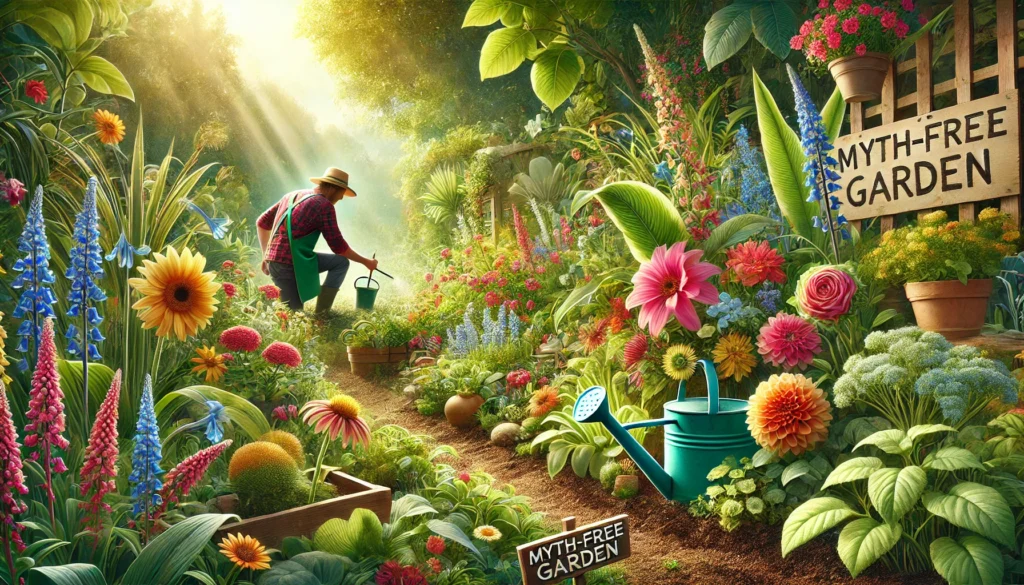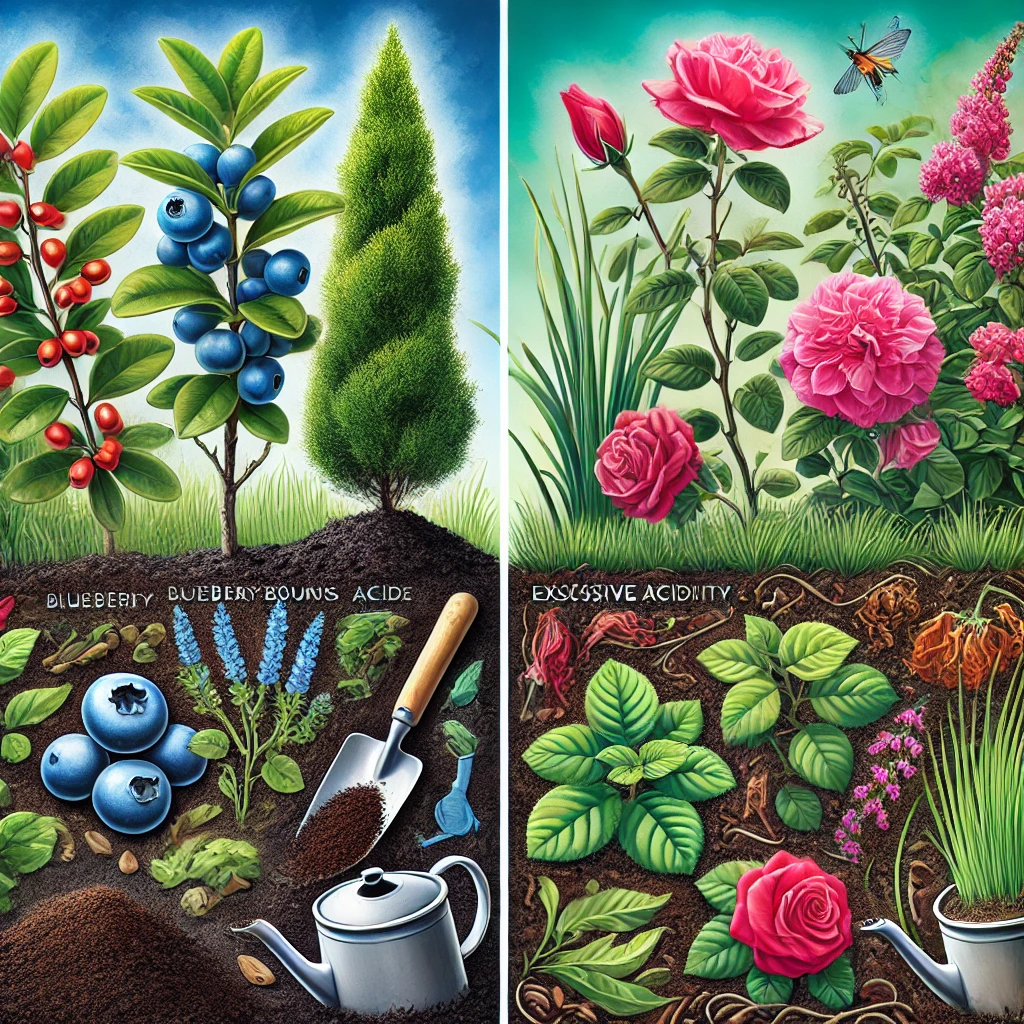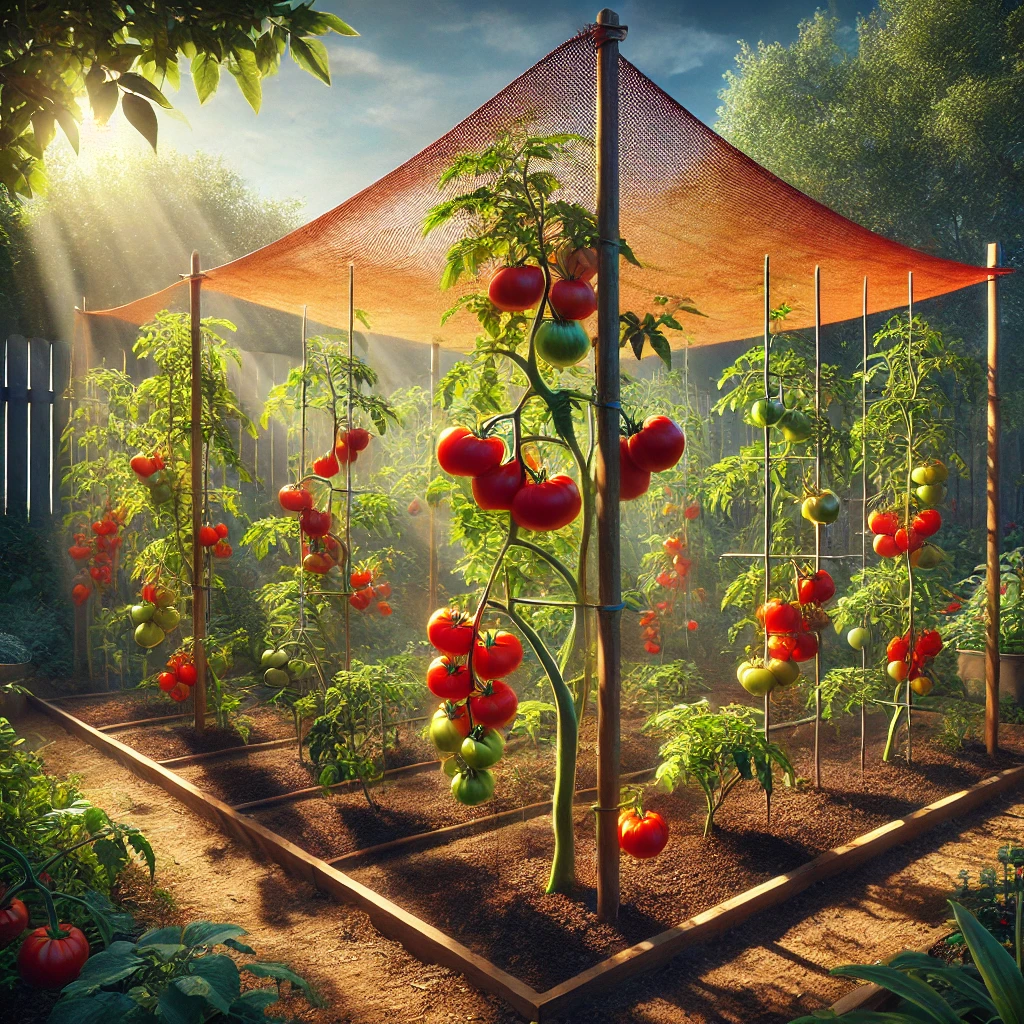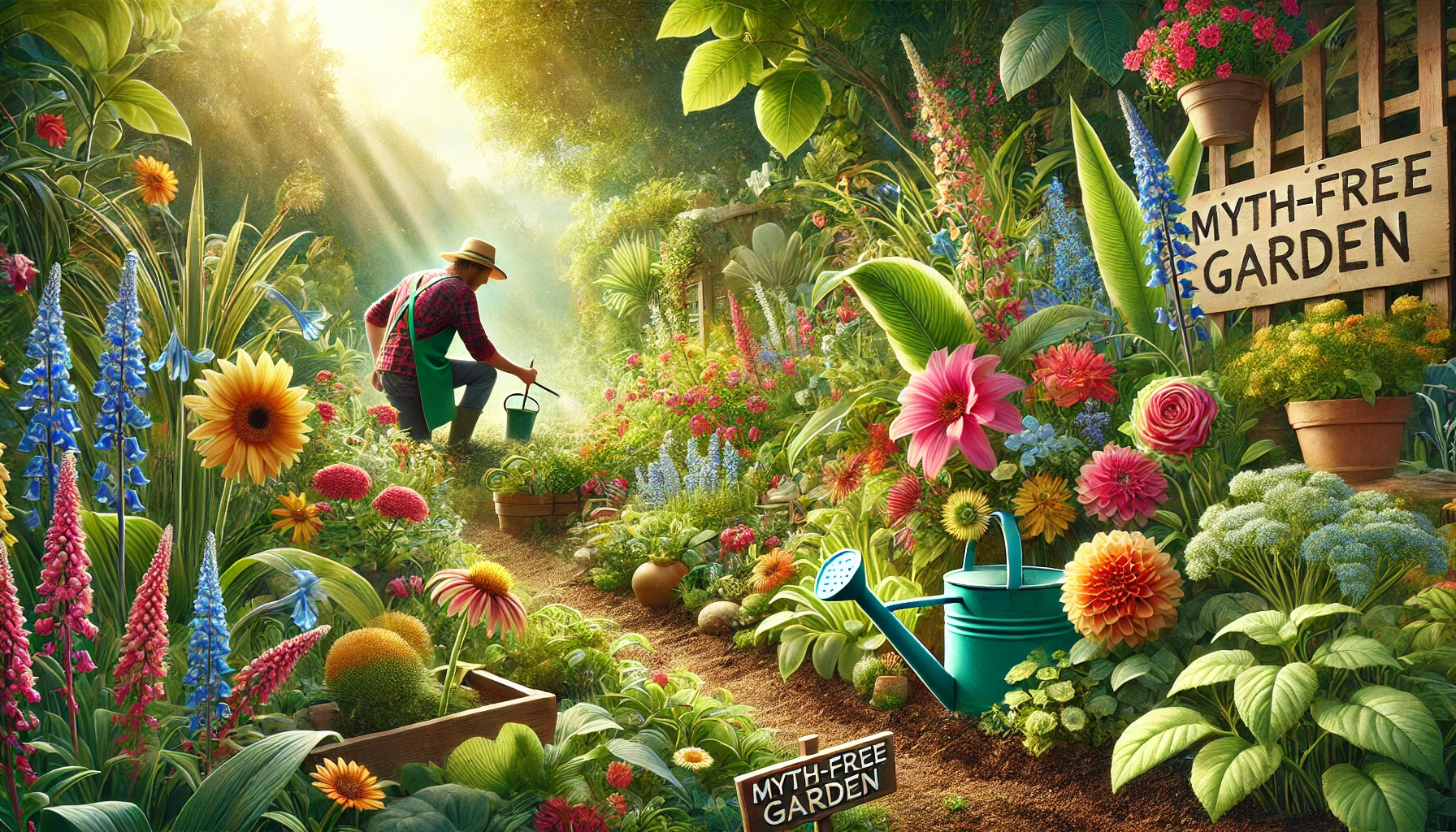Gardening is a rewarding and therapeutic hobby, but it’s easy to fall for myths and misconceptions that have been passed down through generations. These “Garden Myths” can result in wasted time, effort, and resources. In this article, we’ll uncover the truth behind the top 20 most powerful garden myths, providing you with evidence-based insights and practical advice to help you grow a flourishing garden. Whether you’re new to gardening or have been tending to your plants for years, debunking these myths will help you avoid common pitfalls and improve your gardening techniques. From watering tips to plant care, we’ll cover it all in this comprehensive guide.
Misunderstandings about watering, soil conditions, plant growth, fertilizers, pests, and maintenance have been at the heart of many gardening mistakes. Let’s dig into these myths, clear up the confusion, and provide the best practices that will help you keep your garden vibrant and healthy. This article is designed not only to inform but also to empower you as a gardener to make better decisions for your plants and your garden environment.

Table of Contents
1. Myth: “You Should Water Plants Every Day”
Watering plants daily is one of the most common gardening myths that many gardeners swear by. While it seems like a simple way to ensure your plants stay hydrated, over-watering can lead to just as many problems as under-watering. Watering too frequently can cause the soil to become waterlogged, depriving plant roots of the oxygen they need to thrive. This creates an environment conducive to root rot, a deadly condition for many plants. In fact, frequent watering can also lead to shallow root systems, making plants less resilient during dry periods.
The truth is, different plants have different watering needs. While some, like succulents, require minimal watering, others, such as vegetables, need more frequent watering. However, the key is to allow the soil to dry out between waterings. A good rule of thumb is to check the soil’s moisture level by sticking your finger in the soil about an inch deep. If the soil feels dry, it’s time to water. But if it still feels moist, hold off on watering. This ensures that your plants receive the right amount of water without risking over-saturation.
2. Myth: “Pruning in Fall Will Help Plants Grow Faster in Spring”
Many gardeners mistakenly believe that pruning their plants in the fall will lead to faster growth the following spring. While fall might seem like an ideal time for pruning, it’s important to understand that this timing can actually cause more harm than good. Pruning encourages new growth, which requires energy and nutrients. However, this new growth is tender and may not be able to survive the harsh winter conditions. By cutting back in the fall, you expose the plant to the risks of frost damage, which can severely hinder its ability to thrive in the spring.
The best time to prune most plants is during late winter or early spring, just before new growth begins. This is when plants are still dormant, and the risk of frost is minimized. Pruning during this period also encourages strong, healthy growth when the weather warms up. Additionally, pruning in early spring helps shape the plant before it enters its growth phase, ensuring that it has the best possible start to the growing season.
3. Myth: “Coffee Grounds Are Good for All Plants”
Coffee grounds have earned a reputation as a gardening wonder, with many believing that they are a miracle fertilizer that can boost plant health. While coffee grounds do contain nitrogen and other nutrients, they are not suitable for all plants. One of the most significant issues with coffee grounds is their acidic nature. While some plants, like blueberries and azaleas, thrive in acidic soil, many others do not. Using coffee grounds excessively can cause the soil’s pH to drop too much, making it difficult for plants that prefer neutral or alkaline soils to absorb essential nutrients.
To avoid harming your plants, it’s important to use coffee grounds selectively. Instead of applying them directly to the soil, consider composting them first to reduce their acidity. When composted, the grounds become a more balanced addition to the garden. Alternatively, you can mix them with other organic materials like leaves or grass clippings to neutralize their effect. Using coffee grounds sparingly and in combination with other soil amendments will ensure your plants get the nutrients they need without harming the soil.

4. Myth: “Miracle-Gro Is Good for All Plants”
Miracle-Gro is a popular brand of fertilizer that many gardeners rely on for quick and easy plant care. However, the idea that it is suitable for all plants is a misconception. Miracle-Gro provides a high concentration of nitrogen, phosphorus, and potassium, which are essential nutrients for plant growth. While this might seem like the perfect solution for every plant, not all plants benefit from this formula. In fact, some plants, such as acid-loving species, require different nutrient profiles to thrive.
For instance, if you’re growing plants like rhododendrons, azaleas, or hydrangeas, which prefer more acidic soil, Miracle-Gro could disrupt their growth. Using a fertilizer designed for acid-loving plants would be a better choice for these species. Additionally, over-fertilizing with Miracle-Gro can cause nutrient imbalances, which can lead to unhealthy growth or even plant damage. It’s important to understand the specific needs of your plants and choose fertilizers that align with their requirements, rather than relying on a one-size-fits-all product.
Table: Common Fertilizer Needs for Different Plants
| Plant Type | Ideal Fertilizer | When to Apply | Notes |
|---|---|---|---|
| Vegetables | Balanced (10-10-10) | At planting and mid-season | Vegetables need a balanced supply of nitrogen, phosphorus, and potassium for healthy growth. |
| Flowers | Phosphorus-rich | Early spring, before blooming | Phosphorus promotes strong root development and vibrant blooms. |
| Lawns | Nitrogen-heavy | Early spring and fall | Nitrogen encourages lush, green growth. Apply more in spring for quick growth. |
| Fruit Trees | Potassium-rich | Late winter, early spring | Potassium helps improve fruit production and disease resistance. |
| Acid-loving Plants | Acidic, slow-release | Spring and fall | Acid-loving plants, like azaleas, thrive with fertilizers that lower the pH of the soil. |
5. Myth: “Tomatoes Need Full Sun All Day”
When growing tomatoes, gardeners often assume that the more sunlight they get, the better. Full sun is indeed essential for tomatoes, but in certain regions, this can cause more harm than good. Excessive exposure to the midday sun, especially in hot climates, can lead to sunscald, which causes the fruit to develop unsightly blemishes and stunted growth. Additionally, prolonged exposure to intense heat can cause the plant to dry out more quickly, requiring even more water to stay hydrated.
In reality, tomatoes thrive in partial shade during the hottest part of the day. In regions with intense summer heat, providing some afternoon shade can protect your plants from heat stress, allowing them to conserve moisture and grow more robustly. Consider placing taller plants or structures like garden trellises or shade cloth to block the harsh afternoon sun. This will help your tomatoes maintain a more consistent growth pattern and improve fruit yield.
6. Myth: “Mulch Should Be Piled High Around Plants”

Mulching is an essential part of garden care, offering benefits such as moisture retention, temperature regulation, and weed suppression. However, a common misconception is that the more mulch you apply, the better. Piling mulch high around the base of plants can actually cause more harm than good. When mulch is applied too thickly, it can smother the plant’s roots, prevent air from reaching them, and create a damp environment that promotes fungal diseases like root rot.
To avoid these issues, it’s important to apply mulch in moderation. A layer of about 2 to 3 inches is usually sufficient to reap the benefits of mulching without suffocating your plants. Mulch should be kept a few inches away from the plant’s stem or trunk to prevent rot. Additionally, it’s important to regularly check your mulch layer and replenish it as needed to maintain its effectiveness. Proper mulching practices can help keep your garden healthy and reduce the need for frequent watering.
7. Myth: “Birds Will Eat All Your Seeds”
Many gardeners worry that planting seeds will only result in a bird feast. While it’s true that birds are naturally attracted to seeds, they’re not the primary threat to your plants. In fact, birds can actually be beneficial for your garden. Birds help control insect pests, pollinate flowers, and even disperse seeds from other plants. While they may peck at some seeds, they are unlikely to eat all of them, especially if you’re planting larger or more robust seeds.
To protect your seeds from bird predation, consider using simple techniques like row covers or bird netting. These methods allow your plants to grow undisturbed by hungry birds, while still providing them with the essential nutrients they need. You can also plant seeds that are less attractive to birds, such as root crops or plants that have a harder time being accessed. Embrace the benefits that birds bring to your garden and take preventative measures to ensure that your seeds thrive.
8. Myth: “Too Much Compost Can Burn Plants”
Compost is often considered a gardener’s best friend due to its ability to enrich soil with organic matter, improve soil structure, and provide nutrients to plants. However, a common myth suggests that too much compost can burn your plants. The truth is that fully composted material is not harmful to plants, even when applied in larger amounts. Compost is a gentle, slow-release fertilizer that adds essential nutrients and improves the health of the soil, encouraging strong root systems and plant growth.
The issue arises when fresh, uncomposted organic material is applied directly to plants. Fresh compost or manure can be too rich in nitrogen, which can cause “burning” when it comes into direct contact with plant roots. It’s crucial to ensure that your compost is fully decomposed before use, as this will prevent any potential damage. Applying compost at the right time—usually in the spring or fall—and mixing it well into the soil will allow your plants to benefit from the nutrients without any negative side effects.
9. Myth: “More Fertilizer Means a Greener Lawn”
Many homeowners believe that the key to a lush, green lawn is simply applying more fertilizer. However, this “Garden Myth” can lead to more harm than good. Over-fertilizing your lawn can cause a buildup of salts and chemicals in the soil, which can damage the grass, create an unhealthy lawn ecosystem, and lead to nutrient imbalances. In addition, excessive fertilizer can wash away into nearby water systems, causing environmental damage such as algae blooms and contaminated water supplies.
The truth is that the best way to achieve a healthy, green lawn is to apply the correct amount of fertilizer at the appropriate times of year. Grass needs different nutrients during different stages of growth, so it’s important to use a balanced fertilizer that’s tailored to the season and type of grass you have. By following recommended fertilization schedules and using the right products, you’ll promote strong, healthy grass without the risk of over-fertilization. Regular lawn care practices like mowing at the right height and aerating the soil also play a role in maintaining a vibrant lawn.
10. Myth: “Weeds Need to Be Removed Immediately”
Weeds are often seen as the enemy of gardeners, but not all weeds are harmful to your plants. In fact, some weeds can provide valuable benefits to your garden. For instance, certain weeds act as ground cover, preventing soil erosion and retaining moisture. Others, like dandelions, have deep taproots that break up compacted soil, improving soil structure. While weeds should still be managed, they don’t all need to be removed immediately.
Weed management should focus on controlling the spread of invasive species while allowing beneficial weeds to coexist. Instead of pulling every weed, try using organic mulches to suppress their growth. If weeds are causing harm to your plants, use targeted methods such as hand-weeding, hoeing, or using natural herbicides. Managing weeds thoughtfully can help your garden thrive without the need for constant, labor-intensive weeding.
Frequently Asked Questions (FAQs) about Garden Myths
What Greek myths involve plants?
Greek myths such as Daphne turning into a laurel tree and Narcissus becoming a flower are famous plant-related tales.
What is the famous garden in mythology?
The Hanging Gardens of Babylon are one of the most famous gardens in mythology, known as one of the Seven Wonders of the Ancient World.
Are coffee grounds good for the garden RHS?
Coffee grounds can benefit soil as a slow-release nitrogen source but should be composted first to avoid potential acidity issues.
What’s the hardest part of gardening?
The hardest part of gardening is maintaining consistent care, including watering, weeding, and managing pests.
Why were gardens so important?
Gardens historically provided food, medicinal plants, and serene spaces for reflection and relaxation.
Who is the god of gardening?
Priapus, in Greek mythology, is considered the god of gardens and fertility.
What garden did God create?
God is said to have created the Garden of Eden as a paradise for Adam and Eve in biblical tradition.
Are coffee grounds good for your garden?
Yes, coffee grounds can enhance compost and improve soil texture, but they should be used in moderation.
Are eggshells good for plants?
Eggshells provide calcium to plants and can deter pests like slugs when crushed and spread around plants.
What is the fastest way to add nutrients to soil?
Adding compost or organic fertilizers like manure provides an immediate nutrient boost to soil.
What is the hardest plant to grow in a garden?
Orchids are often considered the hardest plants to grow due to their specific light, temperature, and moisture needs.
What age are most gardeners?
Most gardeners tend to be in their 40s and older, but gardening is popular across all age groups.
What is the hardest soil to dig?
Clay soil is the hardest to dig due to its dense and compact nature, especially when wet.
What is the most important thing in a garden?
Healthy soil is the foundation of a thriving garden, supporting plant growth and resilience.
Why are Japanese gardens important?
Japanese gardens symbolize harmony, balance, and nature, often serving as spaces for meditation and tranquility.
Does gardening build muscle?
Yes, gardening involves physical activity that can strengthen muscles and improve flexibility.
Is there a God of gardening?
Yes, Priapus in Greek mythology and Vertumnus in Roman mythology are gods associated with gardening.
What is the Gardens of Babylon myth?
The Hanging Gardens of Babylon are said to have been built by King Nebuchadnezzar II for his wife, though their existence remains debated.
Conclusion
By debunking these “Garden Myths,” we can help gardeners make better decisions, avoid common mistakes, and create healthier, more sustainable gardens. Whether it’s adjusting watering habits, choosing the right fertilizer, or understanding the true role of weeds, knowledge is key. With this new understanding, you’ll be equipped to tackle your garden challenges with confidence, ensuring that your green space flourishes for years to come.
For more insights, explore Expert Garden Plans for Thriving Landscapes, where you’ll find proven strategies to enhance your garden’s potential. If you’re preparing for the new season, don’t miss 6 Breakthrough Spring Pathways to Unlock Divine Purpose. Additionally, check out The Brilliant Garden Rescue: 7 Must-Know Tips to keep your garden vibrant and thriving year-round.
Finally, join millions of readers who have explored fascinating gardening insights by visiting Garden Myths – 15 Million Visits. Together, let’s transform our gardens into spaces of beauty, health, and sustainability!


5 thoughts on “Top 20 Most Powerful Garden Myths Debunked of All Time”